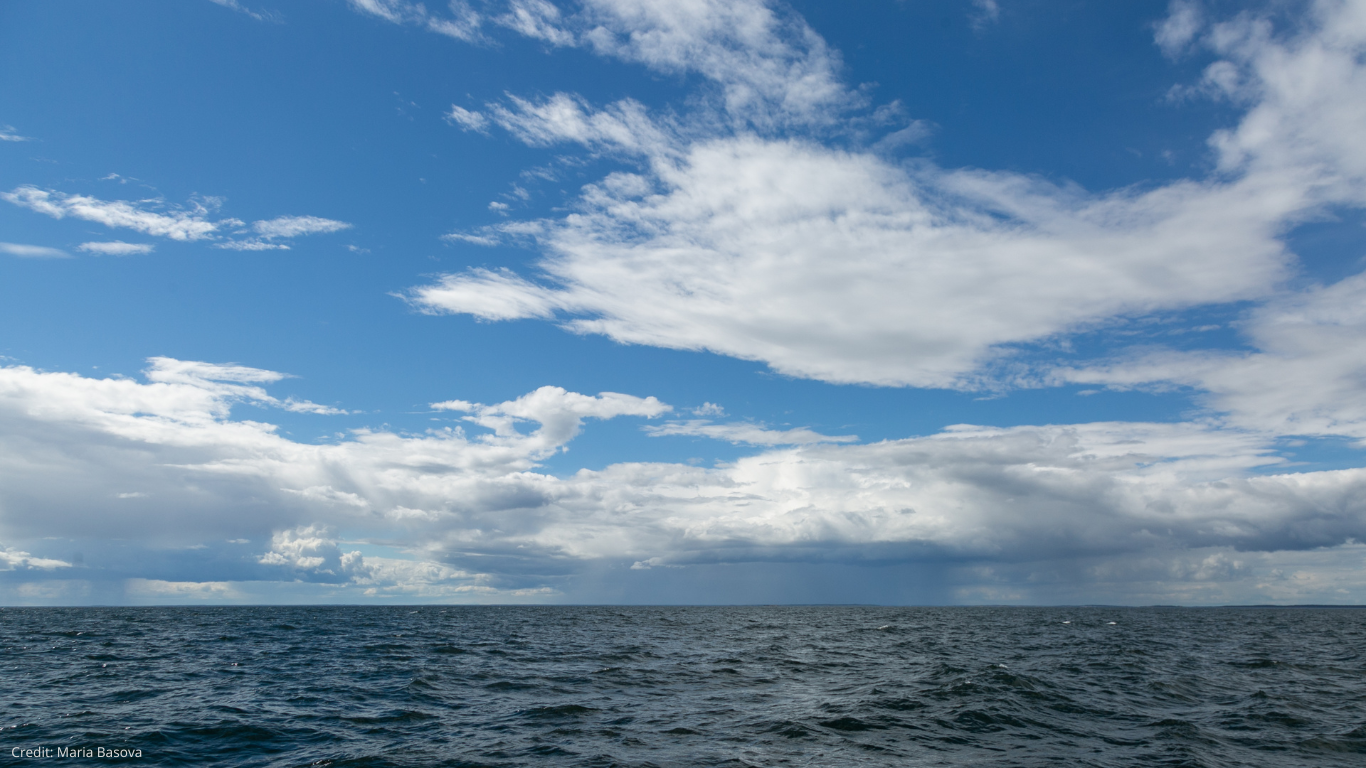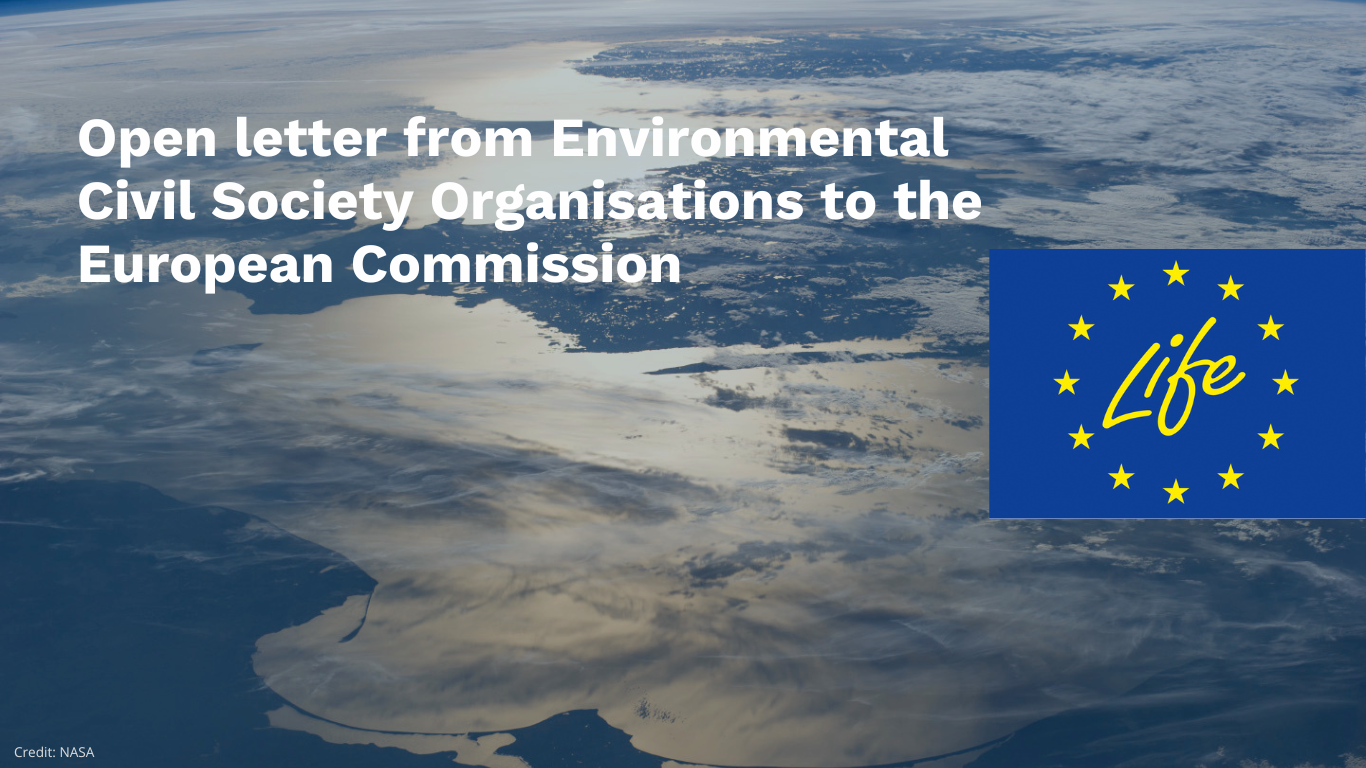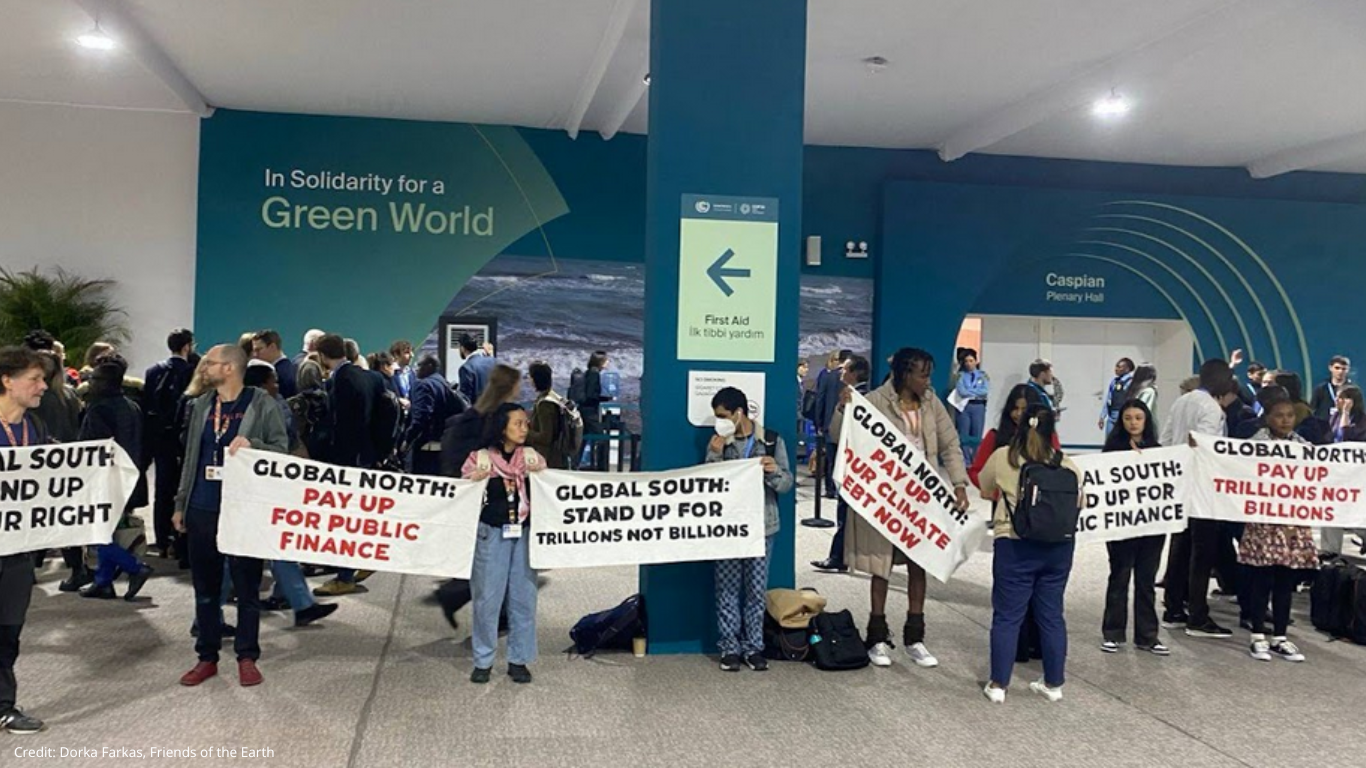Nyheter
CCB-nyheter om miljöfrågor, lösningar, kampanjer, projekt och program på området.

Av CCB
•
6 februari 2025
6 February 2025 - Together with other NGOs, we sent a letter to the German Baltfish Presidency to demand urgent action to prevent the extinction of the Baltic harbour porpoise. The Baltic Proper harbour porpoise population is on the brink of extinction. This dire situation has been well-documented for many years. Solutions are available and can be implemented immediately, alongside necessary measures to restore the Baltic Sea's good environmental status. Allowing the loss of this unique population due to political inaction would be unacceptable and would undoubtedly face widespread societal condemnation. Read the full letter with our requests to the German Baltfish Presidency. EXTRA RESOURCES CCB´s webpage to #SaveTheBalticPorpoise. ICES (2024). EU request on support for the implementation of the Action Plan for harbour porpoise in the Baltic Sea (Baltic Proper) .
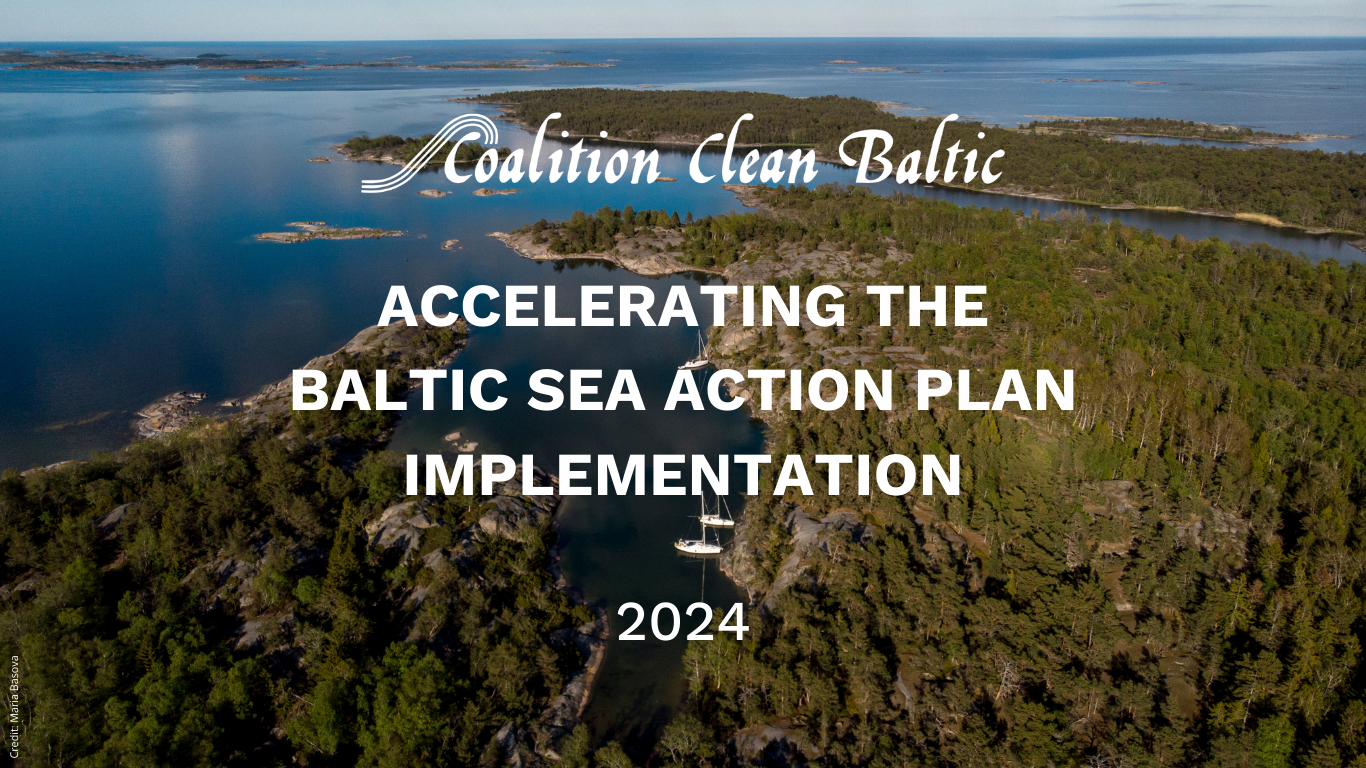
Av CCB
•
12 december 2024
Uppsala/Helsinki, 12 December 2024 - Today, we have launched a new publication, Accelerating the Baltic Sea Action Plan Implementation , addressing the urgent need for the Baltic Sea Region (BSR) governments to enhance their efforts in implementing the HELCOM Baltic Sea Action Plan (BSAP) . As submitted for discussion to the 6th HELCOM Informal Consultation Session of the Heads of Delegation (HOD) - which is currently taking place in Helsinki, Finland - this publication emphasizes that ecological recovery requires immediate, coordinated action. Our lives in the Baltic Sea region depend on healthy and diverse marine and coastal ecosystems. Protecting, restoring, and maintaining their health is vital to sustaining our future. However, the latest HELCOM holistic assessment (HOLAS 3) shows the Baltic Sea is not on a path to recovery . Pressures from climate change, biodiversity loss, and cumulative impacts of human activities continue to grow, jeopardizing our shared marine ecosystem. In our publication, we outline the critical actions required to reverse this trend and achieve a Good Environmental Status (GES) of the Baltic Sea by 2030 . Key Recommendations Include: Strengthening political commitment to prioritize BSAP targets; Embedding Ecosystem-Based Management (EBM) as a core principle; Allocating necessary financial and human resources to meet BSAP obligations; Enhancing cross-border and cross-sectoral collaboration at all levels; Ensuring accountability through transparent evaluation and monitoring mechanisms; Adhering to agreed deadlines with consequences for non-compliance and addressing ongoing ecocide. “ The HOLAS 3 report makes it certainly clear: incomplete and delayed measures are stalling the recovery of the Baltic Sea ,” said Mikhail Durkin, CCB Executive Secretary. “ Governments must take coordinated and sustained efforts to fulfill their commitments under the BSAP, ensuring a healthy and resilient marine ecosystem for future generations .” This publication not only identifies priority actions but also highlights the challenges and solutions associated with achieving BSAP targets. We urge all Baltic Sea Region countries to live up to their responsibility and immediately and effectively follow up on the commitments of the HELCOM BSAP. For further details, or to access the publication, click here .
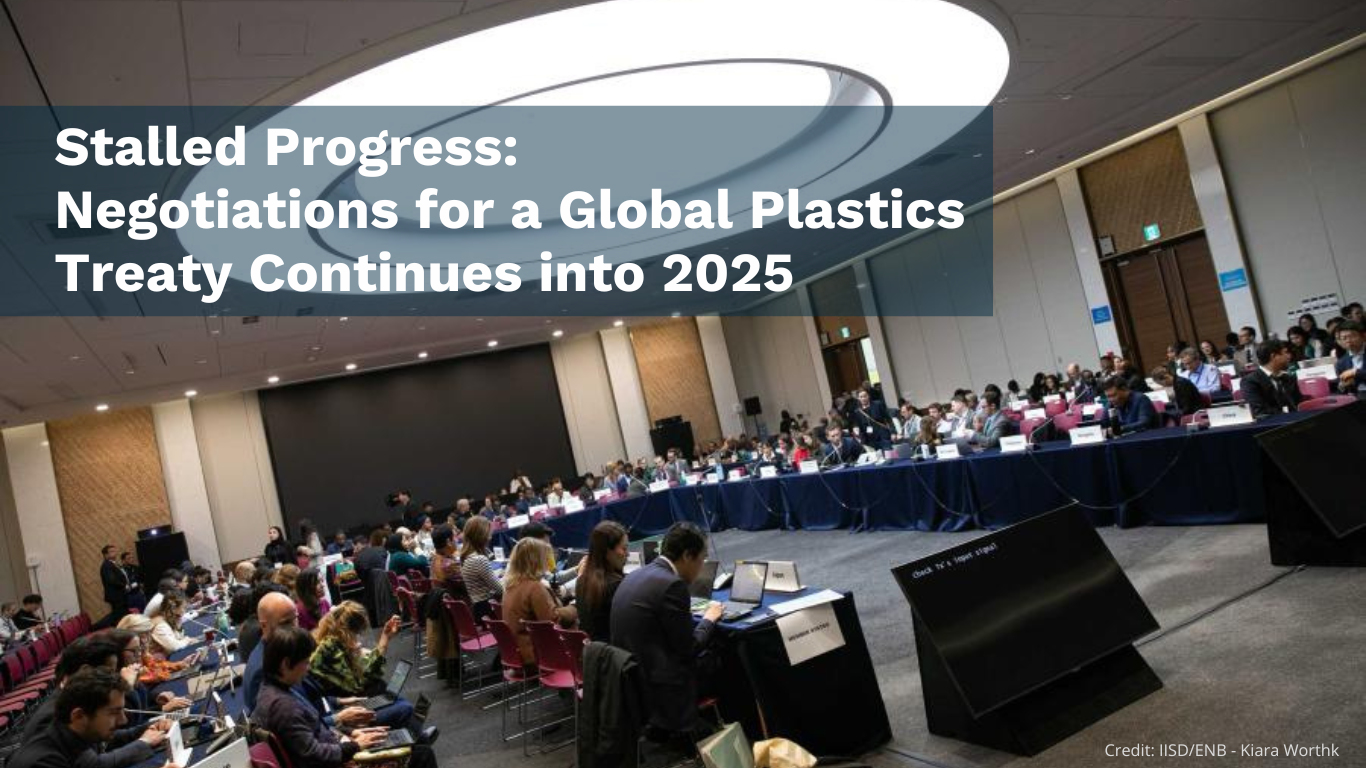
Av CCB
•
4 december 2024
4 December 2024 - The UN Intergovernmental Negotiating Committee meeting in Busan, South Korea, was supposed to be the fifth and final round of negotiations to produce the first legally binding treaty on plastic pollution, including in the marine environment, by the end of 2024. However, it concluded in early December 2024 without an agreement, leaving countries with an extended deadline and a proposal by the Chair to resume talks at an additional session (INC 5.2) in 2025 to resolve outstanding disagreements. Countries will use the latest version of the Chair’s text as the basis for the continued negotiations. Plastic production & global warming At the heart of the discussions was whether the treaty would include limits on plastic production. Over 100 nations, including small island states, African countries, and several European and developing nations like Norway and Mexico, along with the EU, supported a proposal to set a global target for reducing plastic production. Many have emphasized that this is essential to address chemicals of concern. However, for some plastic-producing and oil and gas countries, such a proposal crossed a red line. The plan of petrochemical states to maintain plastic production growth threatens to derail global climate goals. Every year, the world produces more than 360 million tonnes of new plastic. Plastic production is on track to triple by 2050. Scientists estimate that a 75% reduction in plastic production is needed by 2040 to keep global warming to 1.5°C. Without such cuts, plastic production alone could consume up to 31% of the world’s remaining carbon budget to stay within that critical temperature threshold. Plastic & health The economic burden of health impacts is growing. Research by the Endocrine Society revealed that merely four groups of plastic-related chemicals are responsible for health expenses exceeding $400 billion annually in the United States. On a global scale, the UN Environment Programme cautions that failing to address chemical and plastic pollution could result in costs reaching as high as 10% of the world’s GDP. Microplastics have been found in air, fresh produce, and even human breast milk. In animals, such as fish, these broken-down bits of larger plastics have been linked to lower levels of growth and reproduction, among other issues. Researchers are still working to determine more conclusively whether microplastics pose a direct risk to human health, and if so, at what level. Finance Another key area of contention was the financial support for developing country parties. At least 126 countries have called for an independent, dedicated fund to assist with treaty implementation. However, the Chair’s draft weakened this demand, and this is one of the issues will be furthered discussed at INC-5.2 – as well as the proposal of establishment of a polymer production fee, a widely supported mechanism for funding global action.
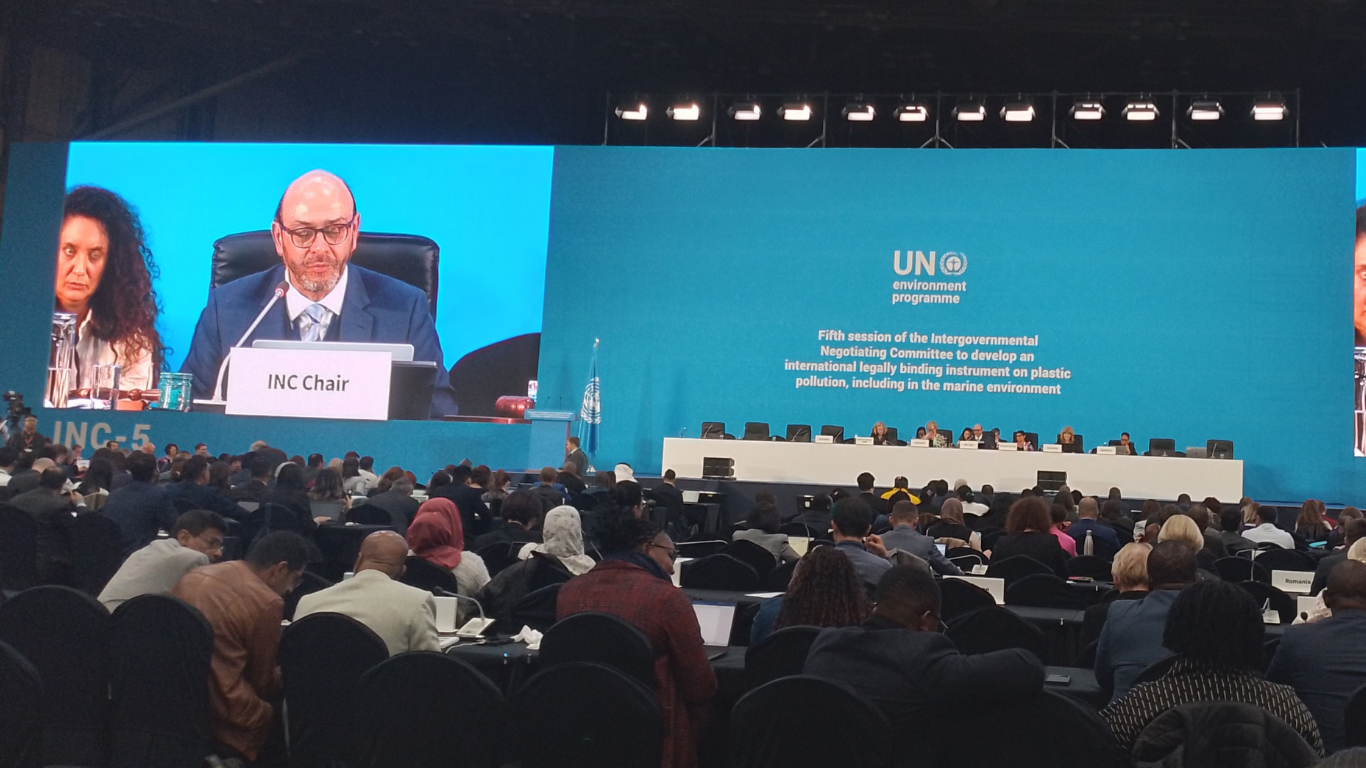
Av CCB
•
25 november 2024
Busan, South Korea – 25 November 2024 – After the 4 th meeting (INC-4) held in Ottawa, Canada , delegates and observers have gathered again in South Korea for the final round of negotiations on the Global Plastic Treaty (INC-5). This pivotal session will take place from November 25 to December 1, 2024, aiming at the development of a legally binding instrument on plastic pollution, including its impact on the marine environment. Also CCB, along with other civil society organizations from across the globe – such as its Member Organization the Swedish Society for Nature Conservation - are actively engaged in these negotiations. In her opening statement, UNEP Executive Director Inger Andersen , remarked: “ Today marks one thousand days since the historic UNEA resolution greenlighting these negotiations. While some multilateral agreements have taken decades to finalize, this represents good progress. However, plastic pollution operates on a different timescale. Some plastics take up to one thousand years to decompose. Even then, they break down into smaller particles that persist, pervade, and pollute. This pollution harms the natural systems and species we rely on, hampers our ability to adapt to climate change, damages ecosystem resilience, and blocks drainage systems in cities. It very likely also harms human health. Furthermore, the continued growth of plastic production emits greenhouse gases, pushing us closer to climate disaster. ”
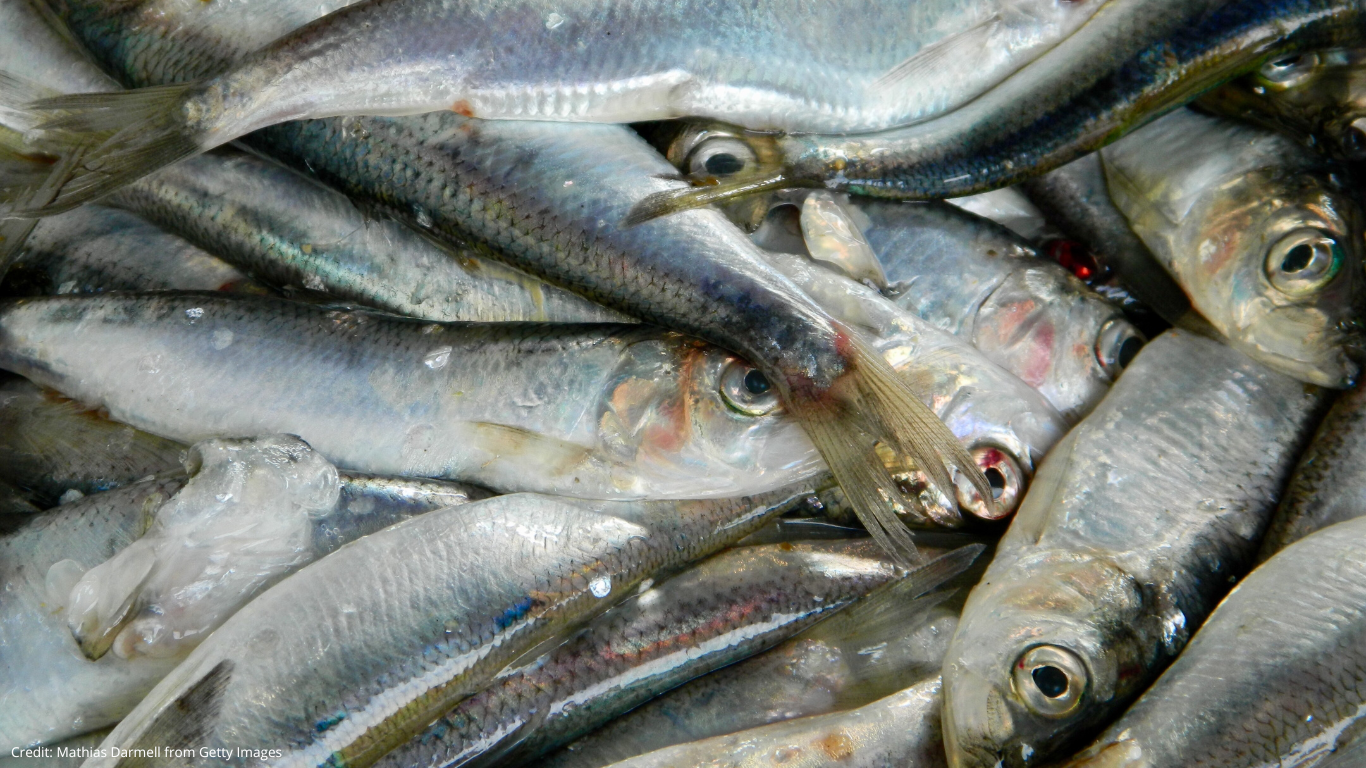
Av CCB
•
22 oktober 2024
22 October 2024 - The Agriculture and Fisheries Council decided today on Baltic Sea fishing opportunities for 2025. In a move that has sparked great concern among marine organisations (1), EU fisheries ministers have yet again ignored the limits (2) of the ecosystem and exceeded scientific recommendations on some of the Baltic Total Allowable Catches (TACs). Despite clear evidence that Baltic Sea ecosystem is under severe stress (3), as well as legal obligations to restore fish populations to healthy levels under the Common Fisheries Policy (4) and the Baltic Multiannual Plan (5), a short-sighted agreement which prioritises interim political gains over long-term sustainability will put vulnerable stocks such as cod, herring and sprat at further risk. Today's agreement is likely to contribute to further degradation of this fragile ecosystem and hasten biodiversity decline. Ministers have increased the TAC for central Baltic herring by over 100%, basing this decision on an increase in the fish population caused mainly by reduced fishing pressure over the most recent years. However, scientific assessments indicate that the central Baltic herring population remains below a healthy level. Moreover, the scientific projections of the stock growth rely on uncertain data (6) and simplification of complex ecosystem processes, with new research showing that stock assessment estimates and recovery trajectories for overfished species tend to be overly optimistic (7). Central herring therefore urgently needs effective rebuilding measures which go beyond the agreed spawning closures. Cathrine Pedersen Schirmer, Senior Policy Advisor for FishSec highlights: “To rebuild the herring population, we urgently need more precautionary fishing limits, combined with other appropriate remedial measures. This is crucial not just for biodiversity, but also for the recovery of other species, such as cod and salmon, and ultimately for the Baltic fishing sector. Today's decision goes in the opposite direction.” The TAC for sprat has been set at a lower level than last year; however, with the sprat population already in decline for years, more efforts were expected to preserve this fish population. Sprat and central Baltic herring are often caught together by large-scale industrial fisheries, and a lack of sufficient monitoring makes it difficult to accurately assess how much of each species is being caught. As a result, this sprat quota also directly impacts the struggling central herring population. Herring and sprat are a fundamental part of the Baltic Sea food web - they are a vital source of food for key predators such as cod, salmon, harbour porpoise and seabirds - and their continued overfishing will have cascading effects across the entire ecosystem. In addition, a great majority of these catches will not even be destined for human consumption but will instead be processed into fishmeal to feed salmon in aquaculture and pigs in land-based farming. On a more positive note, NGOs welcome the decision to keep a low quota for plaice, as increasing this quota was likely to result in a higher bycatch of Baltic cod. However, to increase chances of cod recovery, additional management measures are needed, including trawl-free zones in essential cod habitats and the introduction of remote electronic monitoring (8). Key fish species are already on the brink of collapse, with populations at historically low levels. Scientific experts from the International Council for the Exploration of the Sea (ICES) advised ministers to set zero TACs for critically depleted stocks (9) like eastern cod and western herring. EU ministers chose to disregard this advice, opting to keep by-catch quotas for western herring and both Baltic cod stocks. Remi Cossetti, Marine Policy Officer at Seas At Risk, expresses deep concern over the agreed Baltic fishing opportunities: ”Despite the strong message sent recently by the European Parliament backing safeguards for declining species (10), fisheries ministers have once again set fishing quotas that overlook the essential needs of the Baltic Sea ecosystem (11). This irresponsible decision will exacerbate ecosystem decline and threaten the livelihoods of fishers and coastal communities. Such decision-making, which neglects our environmental responsibilities, is profoundly short-sighted in an era already marked by environmental crises.” Justyna Zajchowska, Fisheries Lead at WWF Baltic Sea Programme, stresses: “Today's decision on the Baltic Sea sprat catch limit is very disappointing. We had hoped that EU fisheries ministers would recognise the role that pelagic fish populations such as sprat play as prey for the many predatory species that inhabit the Baltic Sea, such as depleted cod stocks, and that they would therefore take prudent decisions. In the meantime, the fishing limit set for sprat is too high to recover the balance of the ecosystem while ensuring the long-term prosperity of fishers.” Andrea Cervantes, Biodiversity Officer at Coalition Clean Baltic, underscores the disconnect between biodiversity goals and new quotas: "While the EU arrived with big promises at the Convention on Biological Diversity at the COP16 happening right now, fisheries ministers are further pushing biodiversity outside their door to the brink of collapse. Despite the global agreement on biodiversity (12) reached in Montreal last year, which set targets for the sustainable use of biodiversity, current fisheries management continues to fail in translating these ambitions into effective actions. It is impossible to address biodiversity loss and the increasing pressures of climate change on Baltic Sea fish populations while simultaneously pushing the ecosystem’s resources to their limits. Applying a precautionary buffer is a climate and environmental responsibility that cannot be ignored when setting fishing quotas for 2025." Isabel Seeger, Policy Advisor for Fisheries and Marine Conservation at Deutsche Umwelthilfe, warns for what the TACs mean for the Baltic Sea ecosystem and the fishing industry: “By putting short-term economic interests first, EU fisheries ministers have once again taken risks in setting fishing quotas, doing both the ecosystem and the fisheries a disservice. The victims of this chronic mismanagement are the fishers, as many fish populations are now only a fraction of what they once were. The state of western herring and cod, the traditional key species of German Baltic Sea fisheries, remains catastrophic. Without fish, there is no fishing - but a rethink of fisheries management centering ecosystem health is not yet in sight.” -END CONTACTS ● Sara Tironi, Senior Communications Officer, Seas At Risk, stironi@seas-at-risk.org +32 483 457 483 ● Cathrine Pedersen Schirmer, Senior Fisheries Policy Officer, FishSec, Cathrine@fishsec.org ● Isabel Seeger, Policy Advisor Fisheries and Marine Conservation, Deutsche Umwelthilfe, seeger@duh.de, +49 170 7057673 ● Andrea Cervantes, Biodiversity Officer, Coalition Clean Baltic, andrea.cervantes@ccb.se ● Justyna Zajchowska, Fisheries Lead, WWF Baltic Sea Programme, jzajchowska@wwf.pl NOTES TO EDITORS (1) - Seas At Risk, FishSec, Coalition Clean Baltic, WWF Baltic Sea Programme, Deutsche Umwelthilfe and Suomen Luonnonsuojeluliitto (Finnish Association for Nature Conservation). (2) - EU Fisheries Ministers’ decision for 2025 Fishing opportunities: Baltic Sea: Council agrees on catch limits for 2025 - Consilium . (3) - The Baltic Sea is not in a good environmental status. HELCOM (2023): State of the Baltic Sea. Third HELCOM holistic assessment 2016-2021. Baltic Sea Environment Proceedings n°194 . According to WWF’s report on biodiversity loss, the western cod population decreased by 77% between 2000 and 2023. WWF-Living-Planet-Report-2024-Kurzfassung-dt.pdf . Moreover, climate change also impacts marine species. According to Copernicus Marine Service, heatwaves in the Baltic are increasing in frequency and intensity. https://sp.copernicus.org/articles/4-osr8/16/2024/ (4) - Common Fisheries Policy (Article 2.2) ”The CFP shall apply the precautionary approach to fisheries management, and shall aim to ensure that exploitation of living marine biological resources restores and maintains populations of harvested species above levels which can produce the maximum sustainable yield. In order to reach the objective of progressively restoring and maintaining populations of fish stocks above biomass levels capable of producing maximum sustainable yield, the maximum sustainable yield exploitation rate shall be achieved by 2015 where possible and, on a progressive, incremental basis at the latest by 2020 for all stocks.” REGULATION (EU) No 1380/2013 OF THE EUROPEAN PARLIAMENT AND OF THE COUNCIL of 11 December 2013 on the Common Fisheries Policy, amending Council Regulations (EC) No 1954/2003 and (EC) No 1224/2009 and repealing Council Regulations (EC) No 2371/2. (5) - Multiannual Plans (MAPs) are the main EU fisheries management tools under the Common Fisheries Policy: Regulation (EU) 2016/1139 of the European Parliament and of the Council of 6 July 2016 establishing a multiannual plan for the stocks of cod, herring and sprat in the Baltic Sea and the fisheries exploiting those stocks, amending Council Regulation (EC) No 2187/2005 and repealing Council Regulation (EC) No 1098/2007 (6) - Advice by the International Council for the Exploration of the Sea on the central Baltic herring. https://ices-library.figshare.com/articles/report/Herring_i_Clupea_harengus_i_in_subdivisions_25_29_and_32_excluding_the_Gulf_of_Riga_central_Baltic_Sea_/25019276?backTo=%2Fcollections%2FICES_Advice_2024%2F6976944&file=46738738 ( 7) - A recent study has shown that several projections in fisheries management have been overly optimistic: Graham et al. (2024) “ Stock assessment models overstate sustainability of the world’s fisheries” Science https://www.science.org/doi/10.1126/science.adl6282 (8) - Remote electronic monitoring: https://www.efca.europa.eu/en/content/remote-electronic-monitoring-rem (9) - The advice by the International Council for the Exploration of the Sea for 2025 Baltic fishing opportunities: https://www.ices.dk/advice/pages/latest-advice.aspx (10) - The Baltic Multiannual Plan (MAP) requires setting fishing limits in accordance with ecosystem-based approach to fisheries management for some key species to ensure that negative impacts of fishing activities on the marine ecosystem are minimised: https://eur-lex.europa.eu/legal-content/en/TXT/?uri=CELEX:32016R1139 . In September 2024, the European Parliament sent a strong signal to fisheries ministers by refusing to consider a proposal that would have removed the critical safeguard in the Baltic Multiannual Plan. Last year, the fisheries ministers broke both environmental law and fishing regulations by setting TACs for herring in the Baltic Sea despite the risk of the population’s collapse: Environmental organisations appeal to EU court to invalidate fishing quotas due to Baltic herring stocks collapse (ccb.se) ; CURIA - Documents (europa.eu) (11) - The scientific advice provided focuses primarily on individual fish species, without adequately considering the broader ecological context. As a result, the overall health and long term integrity of the Baltic Sea ecosystem have been overlooked. The responsibility for integrating these ecosystem needs into fishing quotas lies with fisheries ministers. (12) - The Kunming-Montreal Global Biodiversity Framework (GBF) was adopted last year (2023). The agreement sets targets to be achieved by 2030, where ensuring sustainable management and use of biodiversity for human activities is stated, including for Fisheries (Target 10).
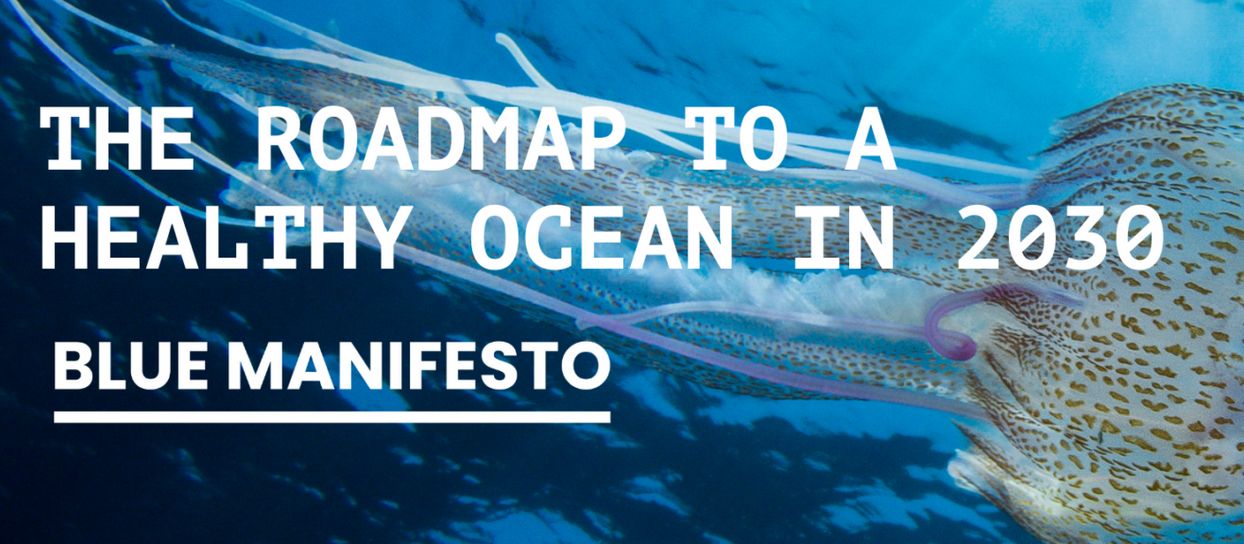
Av CCB
•
2 oktober 2024
With Ocean Week taking the stage this week in Brussels (30 September- 4 October), CCB and other 139 organisations call on the newly elected EU institutions to take a series of bold measures to stop the EU’s ocean and coastlines being pushed to the brink, including launching a Ocean Fund and proposing new legislation to ban destructive activities at sea.
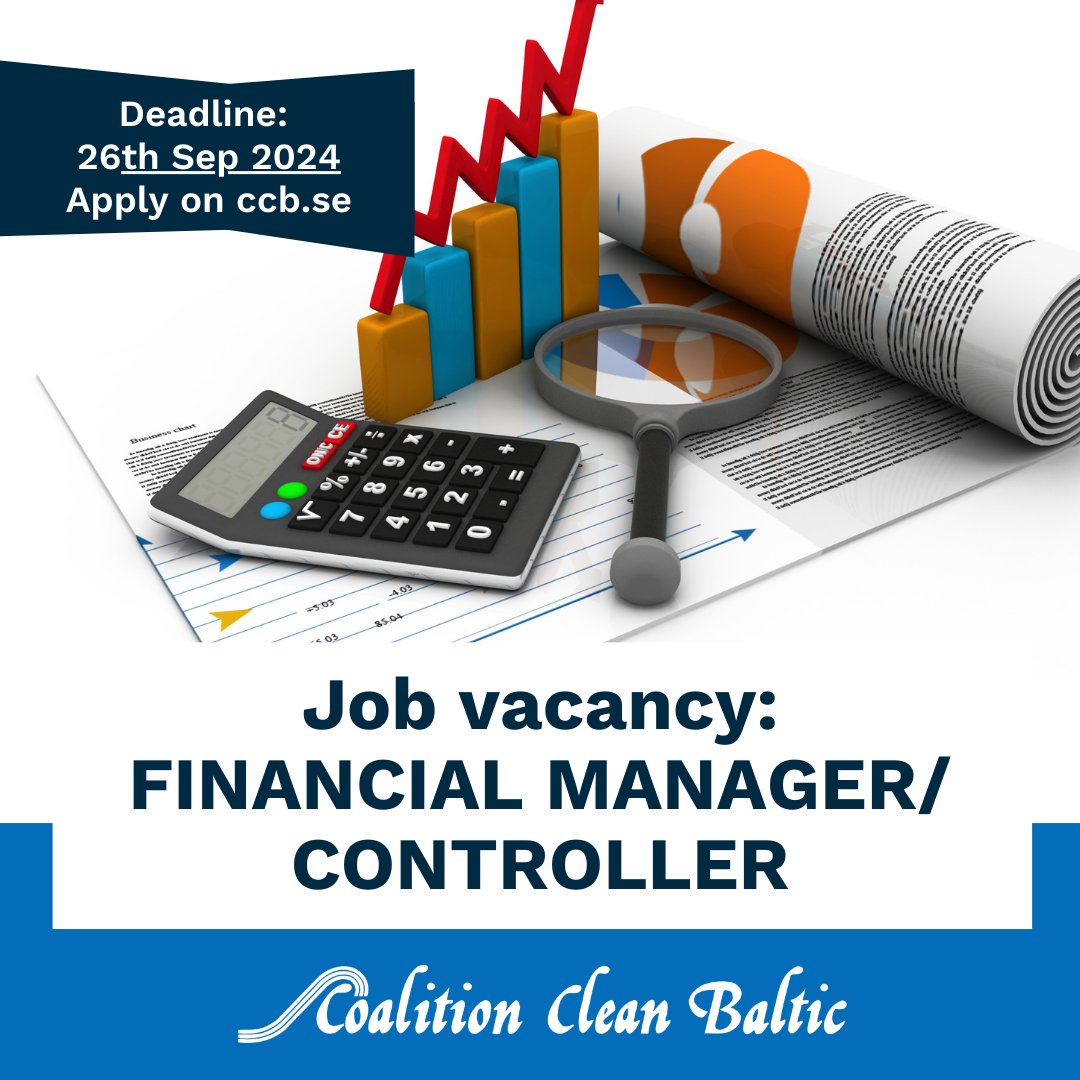
Av CCB
•
26 augusti 2024
Role: This position will play a critical role in the CCB (*) International Secretariat’s conservation work, with an emphasis on the flow of financial resources in the Secretariat and to the network of 26 NGO partner organizations advocating across the Baltic Sea catchment. You will work closely with the team in Uppsala on all financial and operational issues to ensure effective implementation of CCB’s projects and initiatives. You will also support and coordinate development of CCB’s operational, strategic and business plans and ensure effective implementation of the same. Main tasks and responsibilities: - financial management and internal controls within CCB, including daily and yearly routines; - control of the agreements with donors and partners, respective payments and financial reporting on grants received and forwarded; - preparation, implementation and follow-up of the organization’s budget and accounts; - control after balanced co-funding for available donor’s resources; - lead and support implementation of CCB’s fundraising strategy. More detailed list of tasks can be inquired from the contacts below. Required skills and background: We are seeking candidates with: Several years of professional experience in accounting and financial management in Sweden, knowledge of Swedish legislation governing financial transactions and taxation, proficiency in spoken and written Swedish and English, an applicant must be based in Sweden and have a permit to work in Sweden. Desirable skills: Working knowledge of any other language common in the Baltic Sea catchment, including Danish, Finnish, German, Polish, Latvian, Lithuanian, Estonian and Ukrainian. Experience in fundraising. Experience in working with donor organizations such as Swedish international aid (Sida, Swedish Institute), EU LIFE, Interreg and HORIZON Programmes, etc. If you are an adaptable, solutions-focused professional, with a positive disposition, a passion for the ocean and environmental conservation, good sense of humor, vibrant team spirit and a can-do attitude, we’d love to hear from you! Salary: Salary comparable to NGO staff in Sweden and in accordance with the Collective Agreements of the respective unions. Subject to adjustment depending on experience and annual increase. Location: Residence in Sweden is mandatory. Flexible on remote/office hours in Uppsala. Several joint offline events for the whole staff expected per year in Sweden. Travel: Some travel will be necessary, mostly in the Baltic Sea catchment. You need to be able to participate in occasional meetings on weekends. Contract type: Intended permanent position with a 6-month probation period. It is expected that the new employee would start preferably not later than 18 October 2024 , depending on availability. Application and deadline: Should you be interested in applying for this position please send you CV (max. 2 pages) and a personal letter (max. 1 page) before 26 September 2024 to secretariat@ccb.se . Being an international organization, CCB’s work is carried out in English. Applications submitted in any other language will not be considered. Incomplete applications (e.g. lacking either CV or personal letter) will be also not considered. Likewise any inquiries related to this vacancy announcement should be forwarded to the above email or by phone to Executive Secretary Mikhail Durkin at mikhail.durkin@ccb.se and +46 739 770 793. *** In the application and hiring process, CCB will not discriminate against any individual based on race, colour, sex, language, religion, national or social origin, property, disability, age, family status, sexual orientation and gender identity, economic and social situation. (*) Coalition Clean Baltic – CCB is a politically independent, non-profit association and unites Member and Observer organizations, as well as partners and individual experts in all countries of the Baltic Sea Region. Combined, the 26 CCB member and observer organizations have almost 1 500 000 members in all countries surrounding the Baltic Sea. The main goal of CCB is to promote the protection and improvement of the environment and natural resources of the Baltic Sea region for present and future generations. Common objectives for the CCB network include seeking opportunities to encourage new and constructive approaches and engaging people to become part of the solution instead of part of the problem. Being an international network organization, CCB has the advantage of being able to work both at the international and national policy levels as well as with concrete field projects. Four ways to reach our goal are: (1) Advocacy , (2) Information, environmental education and other activities , (3) Concrete co-operation projects in the field and (4) Support to Member Organizations . In order to strengthen its efforts and promote joint action to restore the environment of the Baltic Sea, CCB has 4 main Working Areas that are important for all its members: Eutrophication, Biodiversity, Hazardous Substances and Maritime. CCB is Member of IUCN, BSAС; GWP Partner; Observer at HELCOM, NASCO, IWC. To read more about CCB’s engagement in marine policy implementation, please visit our recent Annual Reports Further information about CCB’s policies and main documents is available here.


